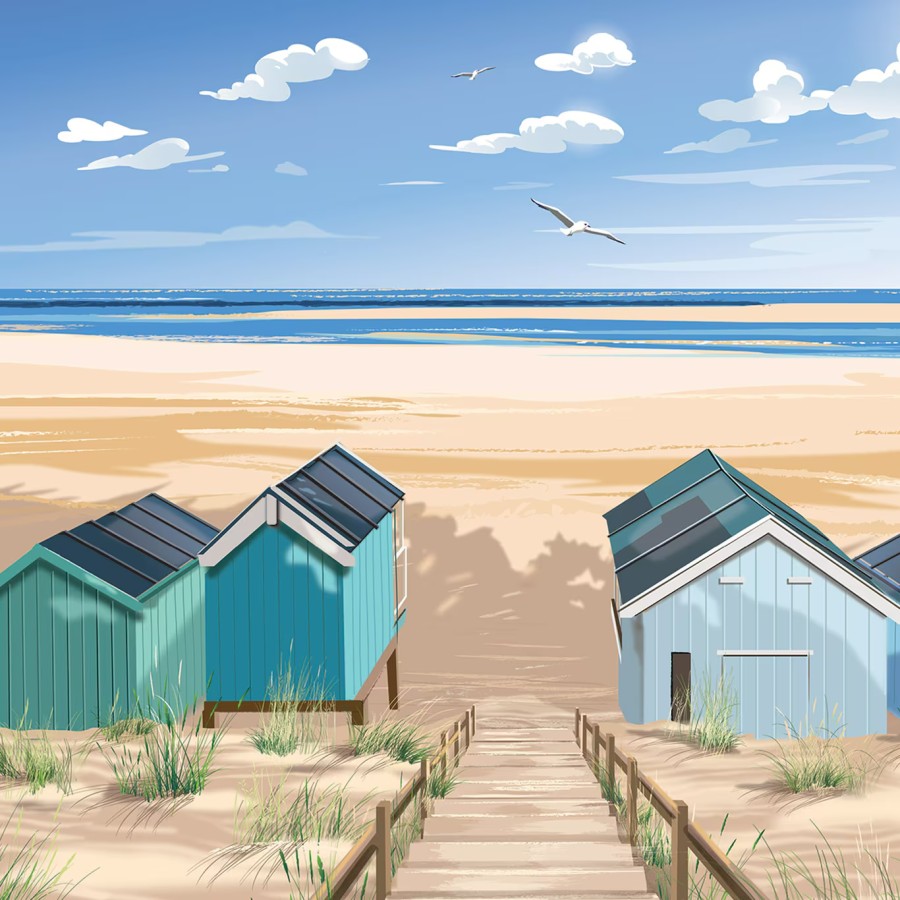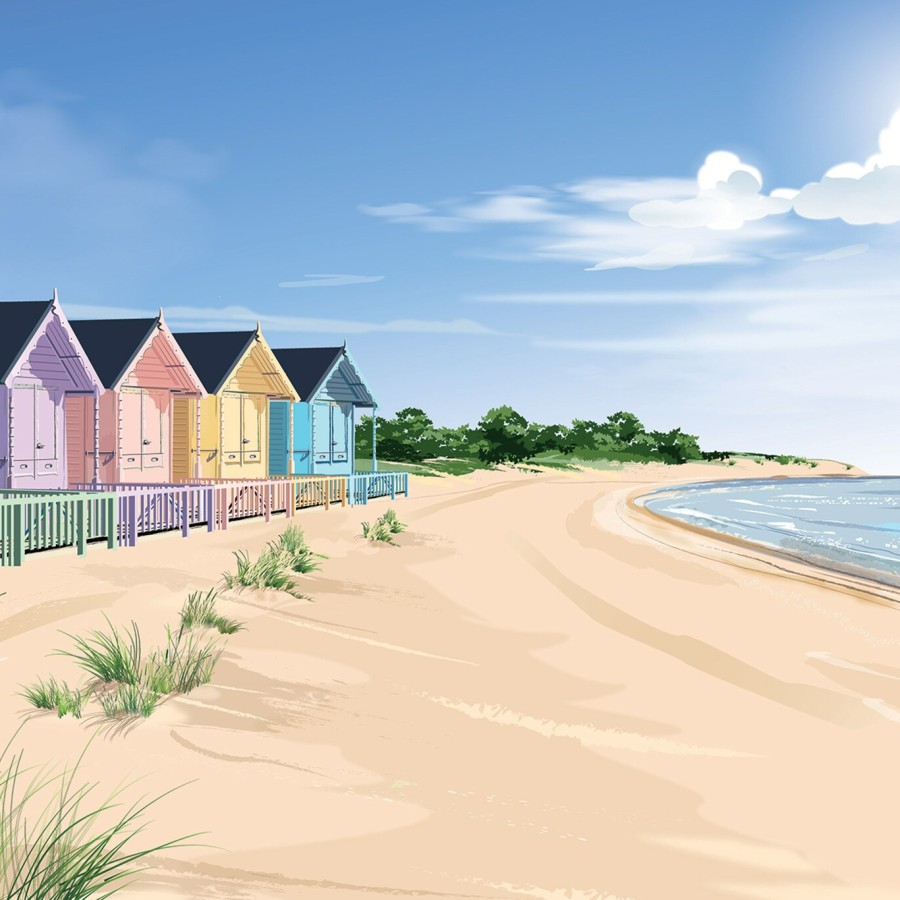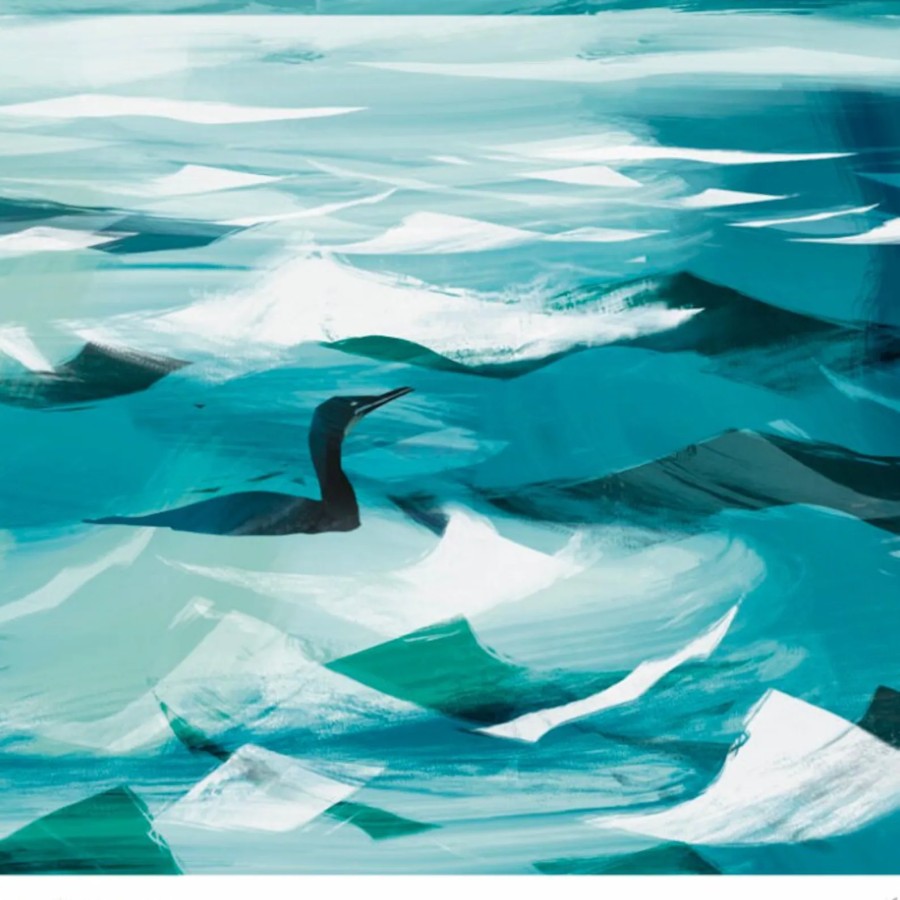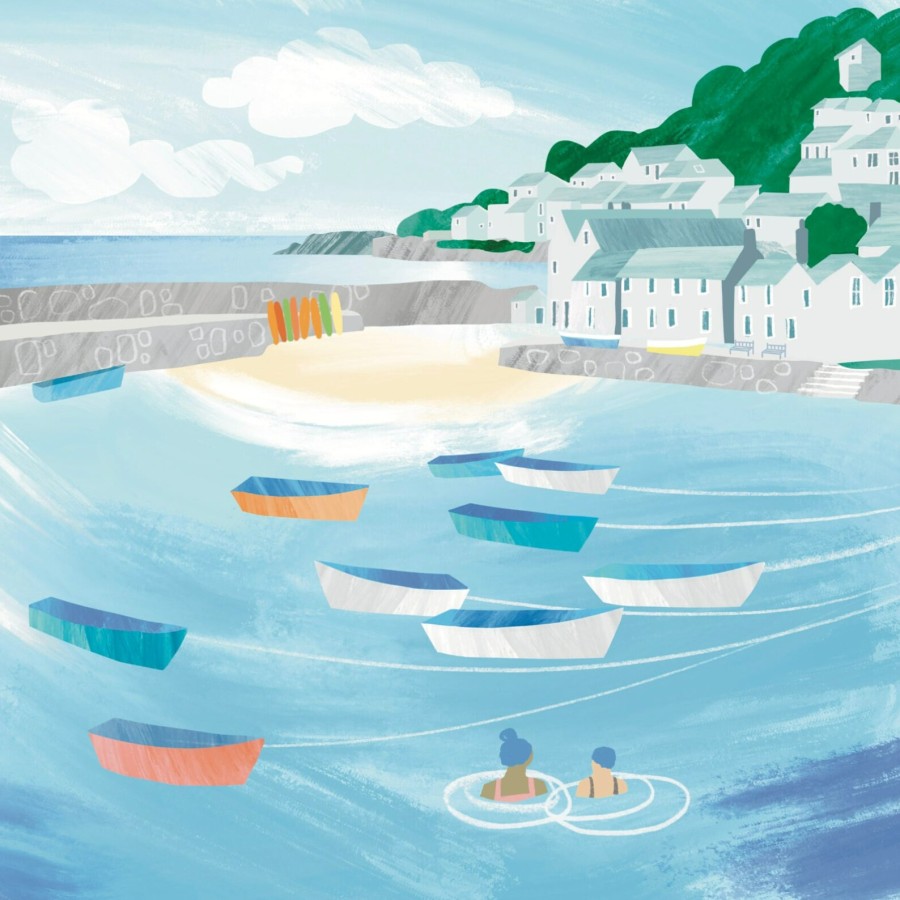
Wells-next-the-Sea (Norfolk) by Geraldine Burles
Beach huts were originally designed in Victorian times to let people discreetly change (unless you were rich enough to be wheeled out to sea in a ‘bathing station!), most have no running water, but a couple of deckchairs and a Thermos flask is all you need to gaze at the horizon, as the sun goes down. How good is life by the sea?!

Mersea Island (Essex) by Geraldine Burles
Today beach huts are still found around the coastline, although often they cost hundreds of thousands of pounds to buy. But back in the day, it was common for people to own one. Beach huts are popular with our Danish neighbours, though you can’t buy one unless you’re a local. Unlike here, they tend to be white with doors at the side, so you can’t look a the sea (they are also often removed during winter). Climate change and its freak weather is affecting beach huts, as storms and winds have sent some hurtling into the sea, and rivers bursting their banks nearby have also created havoc.
Although we associate most beach huts as being ‘too posh and expensive’ for most people, the Essex town of Walton-on-the-Naze has over 1000 more affordable beach huts prettying up the coast. They are still expensive (from £30K to £50K0 but far less so, and more enjoyed by locals, who have been visiting them and the nearby sandy beaches for over 100 years. Thankfully old-fashioned, one Guardian reviewer writes that ‘you can’t get artisan bread or proper coffee, but that is its charm’.

This pretty art print of coastal beach huts is an iconic image for anyone living in the East of England or on the south coast (or even sometimes the north coast). Beach huts were originally designed in Victorian times to let people discreetly change (unless you were rich enough to be wheeled out to sea in a ‘bathing station!), most have no running water, but a couple of deckchairs and a Thermos flask is all you need to gaze at the horizon, as the sun goes down. How good is life by the sea?!
Today beach huts are still found around the coastline, although often they cost hundreds of thousands of pounds to buy. But back in the day, it was common for people to own one. Beach huts are popular with our Danish neighbours, though you can’t buy one unless you’re a local. Unlike here, they tend to be white with doors at the side, so you can’t look a the sea (they are also often removed during winter). Climate change and its freak weather is affecting beach huts, as storms and winds have sent some hurtling into the sea, and rivers bursting their banks nearby have also created havoc.
Although we associate most beach huts as being ‘too posh and expensive’ for most people, the Essex town of Walton-on-the-Naze has over 1000 more affordable beach huts prettying up the coast. They are still expensive (from £30K and more enjoyed by locals, who have been visiting them and the nearby sandy beaches for over 100 years. Thankfully old-fashioned, one Guardian reviewer writes that ‘you can’t get artisan bread or proper coffee, but that is its charm’.
Artist Henry Rivers is a popular young artist, known for his relaxing and subtle paintings, which often reflect nature and the coast. Playful and minimalist, his art is very unique, and ideal to frame and hang on the wall for your home, office or small shop – a bit of calm escapism! Raised on the beautiful Isle of Wight, he now works and lives in London.






